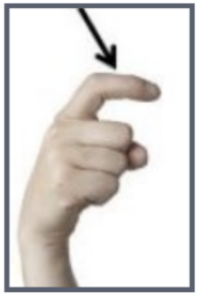INTEGRATING SCIENCE, TECHNOLOGY, ENGINEERING AND MATHEMATICS (STEM) INTO THE HOME ENVIRONMENT
Trendy Tennies
ENGINEERING TASK
Inspired by Pete the Cat: I Love my White Shoes by E. Litwin & J. Dean
Task adapted from Teach Engineering STEM curriculum developed at the University of Colorado Boulder. Images from previous families who completed this kit.
MATERIALS IN KITS
- 20 Cotton balls
- 2 Sheets white cardstock
- 2 Rolls of ribbon
- 10 Velcro dots
- 4 Sheets of Sandpaper
- 10 Pipe cleaners
- Scissors
- Fabric
- 3-4 Foam sheets
- 2 markers
- 15 pom-poms
- Foam stickers
- Tacky Glue
- Hole Puncher
READ & TALK
Read the book, Pete the Cat: I Love My White Shoes.
In the story, Pete the Cat keeps messing up his shoes but he keeps walking and singing. Do you like Pete’s shoes? What was your favorite color?
What type of shoes do you like? How does the type of shoe you wear depend on what you are doing? Where you are going? What the weather is outside?
 ENGINEERING TASK
ENGINEERING TASK
Your engineering task is to design a new trendy shoe for Pete the Cat or one of his four friends. Their only request is that the shoe be an original design—your design – and that you consider what they like to do and the number and shape of my “feet.”
CUSTOMERS
To learn more, click on the names of the customer(s) you are interested in designing a shoe for.
RESEARCH
Do research on your customer. What did you find that was interesting?
Next, think about how you will use the information about your customer in the design of the shoe. For example, what is the intended purpose (e.g., playing the drums, riding a motorcycle)? How will you make your prototype uniquely stylish, a one-of-a-kind design? How does the shape of the customer’s shoe impact the design of the shoe?
 PLAN
PLAN
On a sheet of paper, sketch your shoe design and list the material you will use for your prototype shoe. You are free to use the material in the kit and/or material in your home.
DID YOU KNOW…?
You can use the middle part of your pointer finger as a way to measure the length in inches.
Check out this video for additional ways to use your body to measure objects.
Based on your plan, about how many inches will the prototype be in inches?


 CREATE
CREATE
It’s time to put your plan into action and create a prototype for your customer.
IMPROVE
How would your user rate your prototype?

Based on your user and your research, what changes and/or additions might you make to improve your prototype? Explain why.
SHARE THE FUN AND PASS IT ON!
Thank you for participating.
When you are done with this project, gift the book and the directions to your friend to make the idea of engineering leave footprints.

 CUSTOMER 1
CUSTOMER 1
Shoe size: Kid’s 3
“Feet”: 6 arms and 2 legs
About: Octopus is Pete’s friend. He loves juggling and having fun.
 CUSTOMER 2
CUSTOMER 2
Shoe size: Kid’s 1.5
“Feet”: 2 front legs with four toes & 2 back legs with five toes.
About: Grumpy Toad loves riding his motorcycle and he plays a pretty good bass guitar.
 CUSTOMER 3
CUSTOMER 3
Shoe size: Kid’s 2
“Feet”: 4 feet with sharp claws
About: Squirrel is often timid and nervous. Squirrel worries about things going wrong and is afraid of getting lost.
 CUSTOMER 4
CUSTOMER 4
Shoe size: Men’s 10.5
“Feet”: 4 webbed feet
About: Gus the platypus is a little shy around others, but has a great passion for music. He is an excellent drummer.
RESEARCH – OPTIONAL QUESTIONS
 Optional questions to ask:
Optional questions to ask:
- What other things should we consider for the shoe?
- How important is comfort and flexibility?
- Will your shoe have laces, straps, or both? Why?
- Watch the YouTube video entitled “Blippi Explains: How To Make Shoes” at https://youtu.be/Ey7RjzyLR7Y. Afterwards, ask “What did you notice that we can use in the design of our shoe?”
PLAN – OPTIONAL QUESTIONS
Optional questions to ask:
- How might we use _______ (e.g., ribbon) in our design? What is its purpose?
- How is _________ based on your research?
- Again, let’s think about the user. What might they think about ________?
- We know the size of _____’s foot is ______ (e.g., Kid’s 2). Should our prototype be bigger, smaller, or the same size? Why?
CREATE – OPTIONAL QUESTIONS
Optional questions to ask:
- This is not working as we planned, what might we do differently?
- I like how you are ______.
- Explain to me the purpose of _______ (material). What function does it serve?
- Can I show you something that I was thinking about? (ask for permission)




